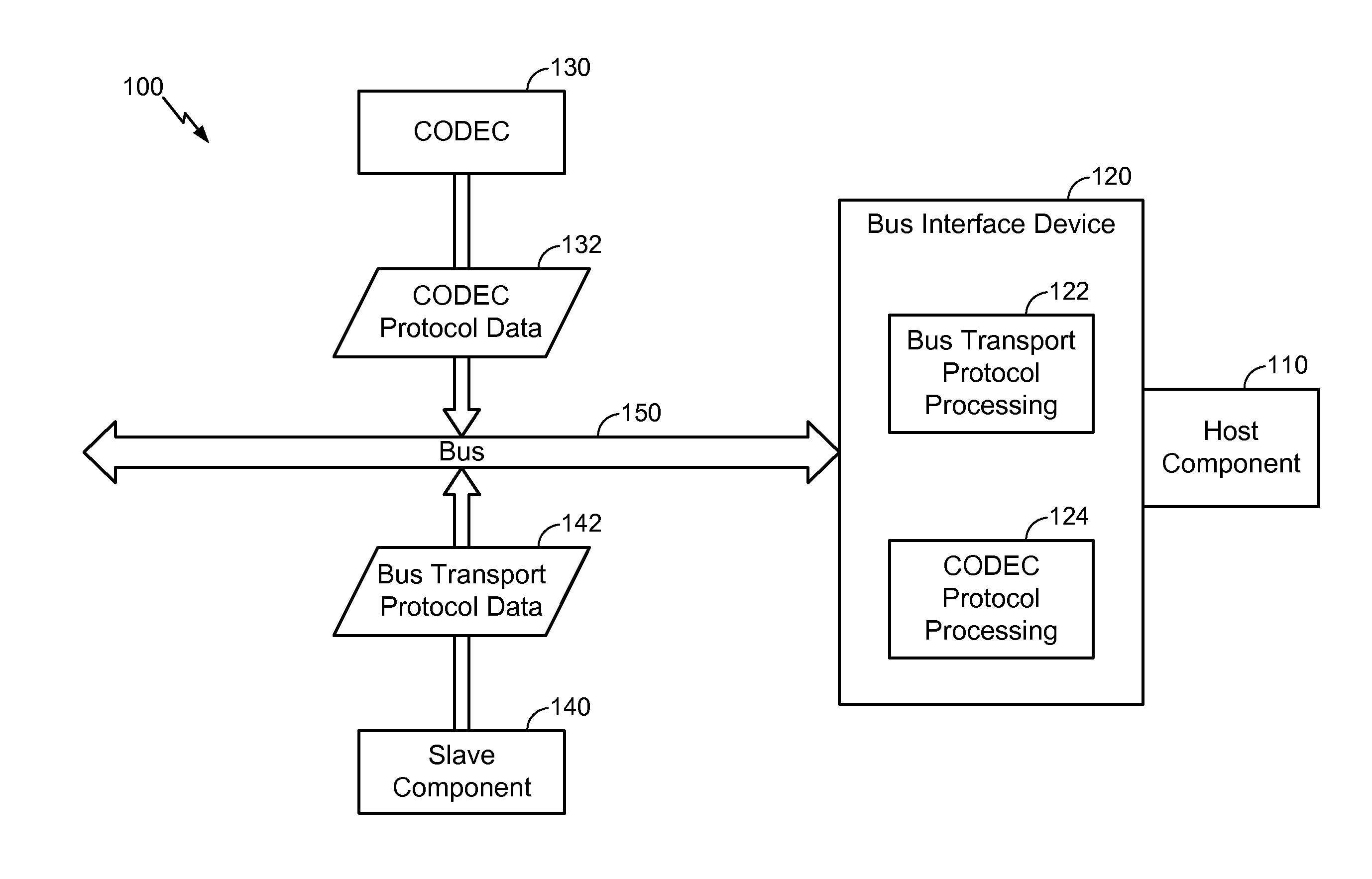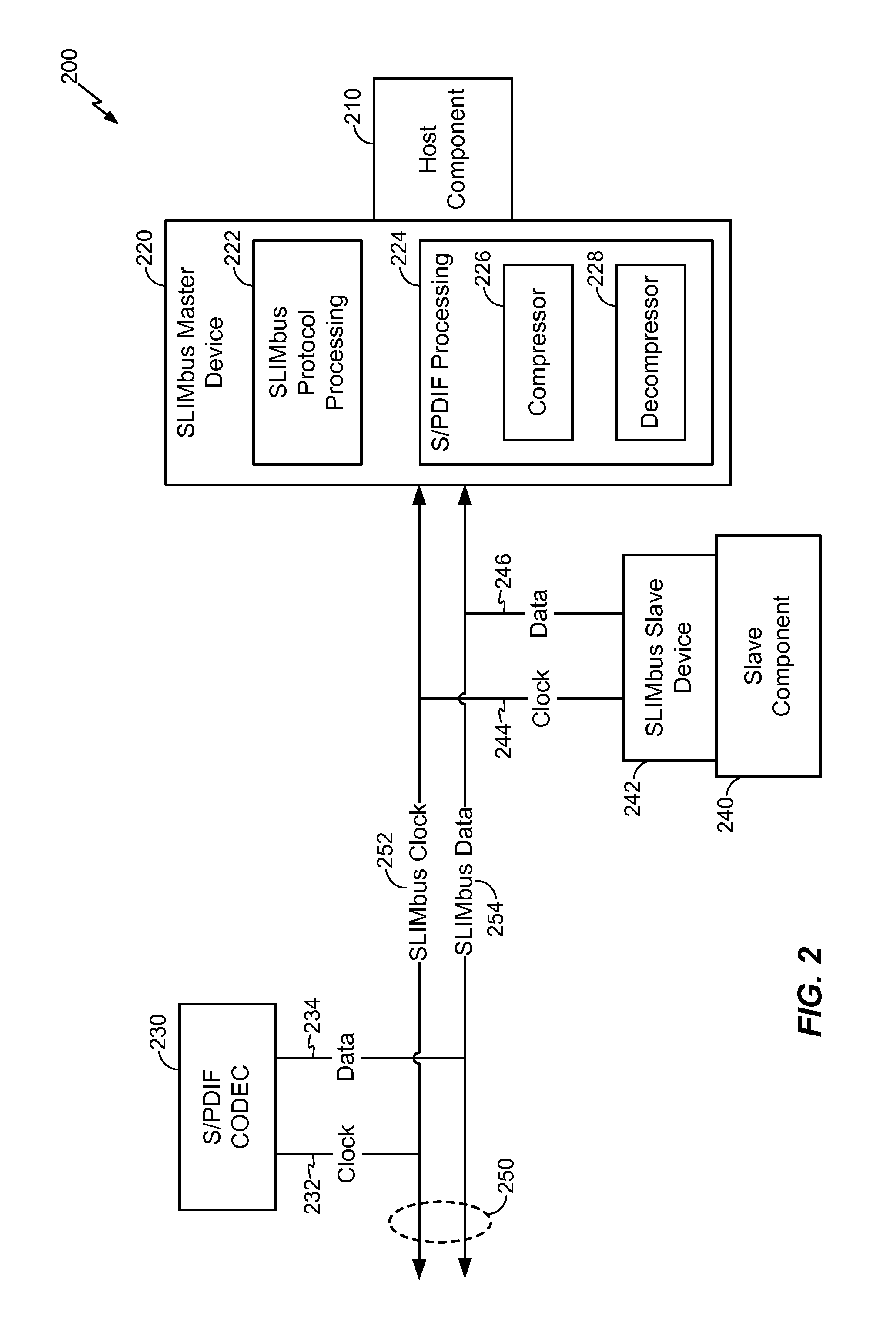Multi-protocol bus interface device
a bus interface and multi-protocol technology, applied in the field of multi-protocol bus interface devices, can solve the problems of increasing the complexity of each codec, preventing the use of off-the-shelf codecs, and time-consuming,
- Summary
- Abstract
- Description
- Claims
- Application Information
AI Technical Summary
Benefits of technology
Problems solved by technology
Method used
Image
Examples
Embodiment Construction
[0018]FIG. 1 depicts an illustrative embodiment of a system 100 including a bus interface device 120 operable to process data in accordance with multiple protocols. The bus interface device 120 may be coupled to a host component 110 (e.g., a processor). The bus interface device 120 may also be coupled, via a bus 150, to CODECs (e.g., an illustrative CODEC 130) and other slave components (e.g., an illustrative slave component 140). In a particular embodiment, the system 100 may be integrated into an electronic device such as a wireless phone.
[0019]The CODEC 130 may be operable to code and decode data in accordance with a CODEC protocol. The CODEC 130 may be a hardware-implemented audio CODEC, such as an S / PDIF codec, an integrated interchip sound (I2S) codec, or a pulse-code modulation (PCM) codec. Alternately, the CODEC 130 may be a hardware-implemented video codec, such as a moving picture experts group-4 (MPEG-4) codec or a VP6 flash video codec. The CODEC 130 may transmit CODEC p...
PUM
 Login to View More
Login to View More Abstract
Description
Claims
Application Information
 Login to View More
Login to View More - R&D
- Intellectual Property
- Life Sciences
- Materials
- Tech Scout
- Unparalleled Data Quality
- Higher Quality Content
- 60% Fewer Hallucinations
Browse by: Latest US Patents, China's latest patents, Technical Efficacy Thesaurus, Application Domain, Technology Topic, Popular Technical Reports.
© 2025 PatSnap. All rights reserved.Legal|Privacy policy|Modern Slavery Act Transparency Statement|Sitemap|About US| Contact US: help@patsnap.com



